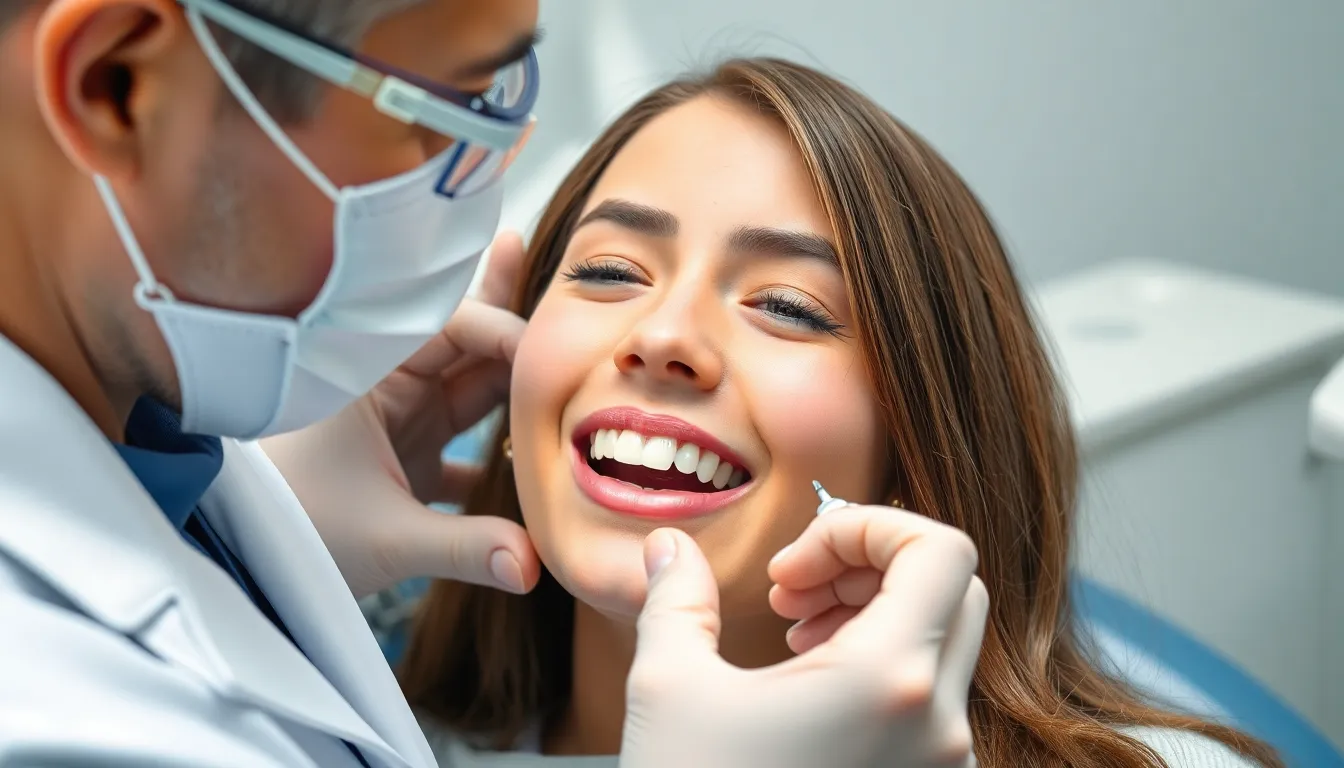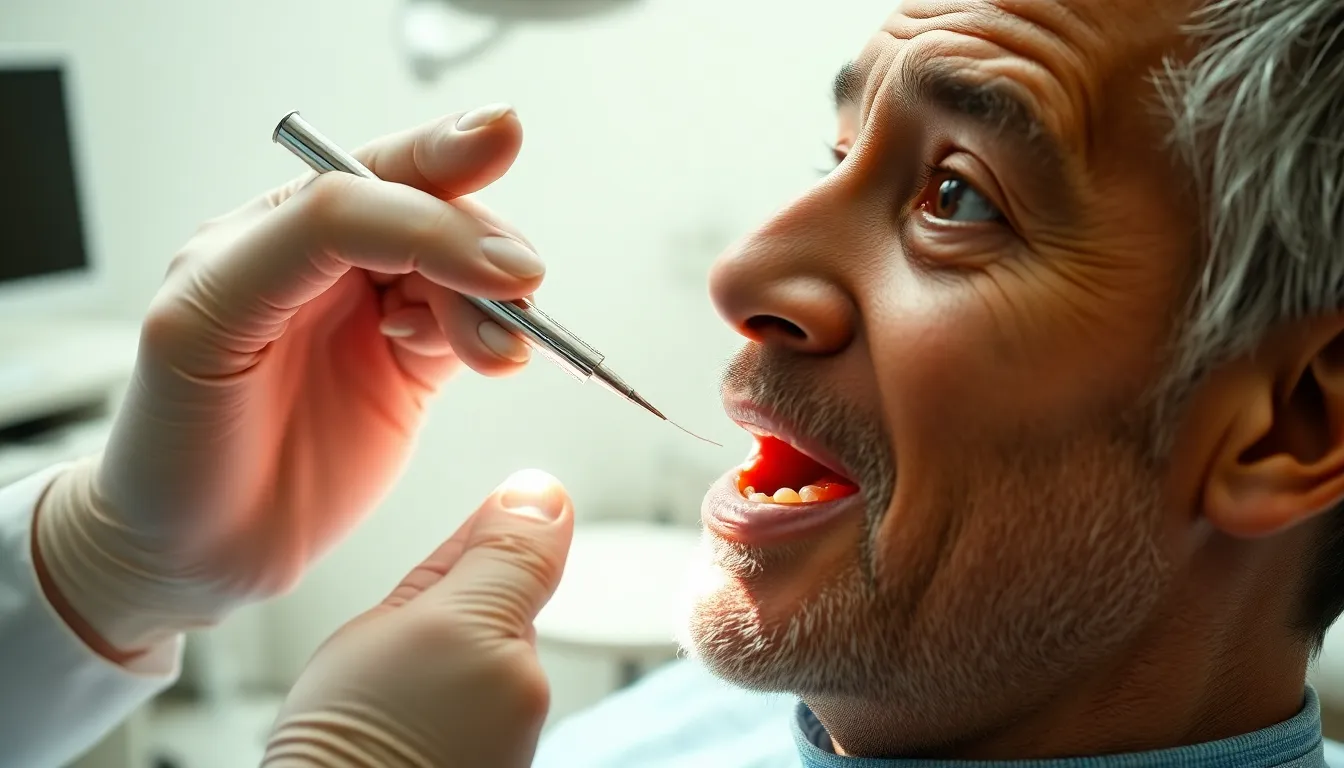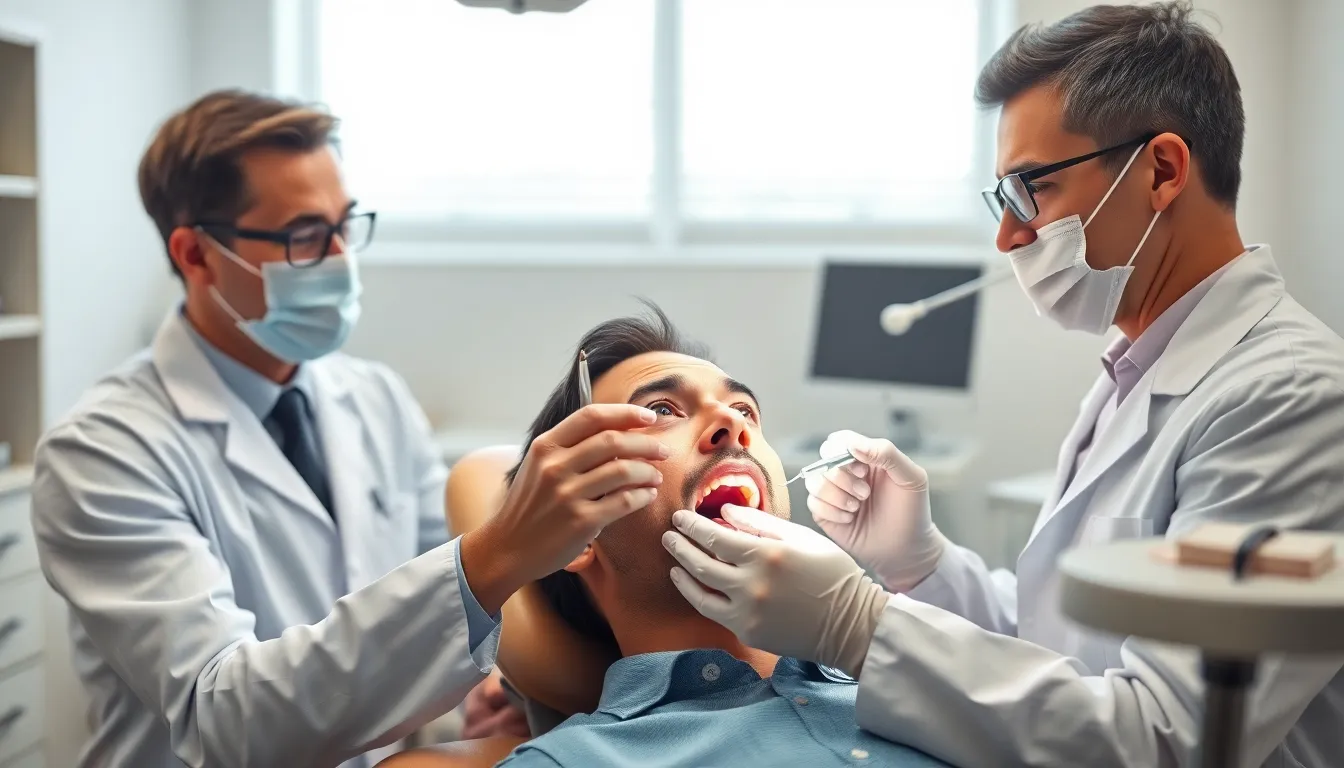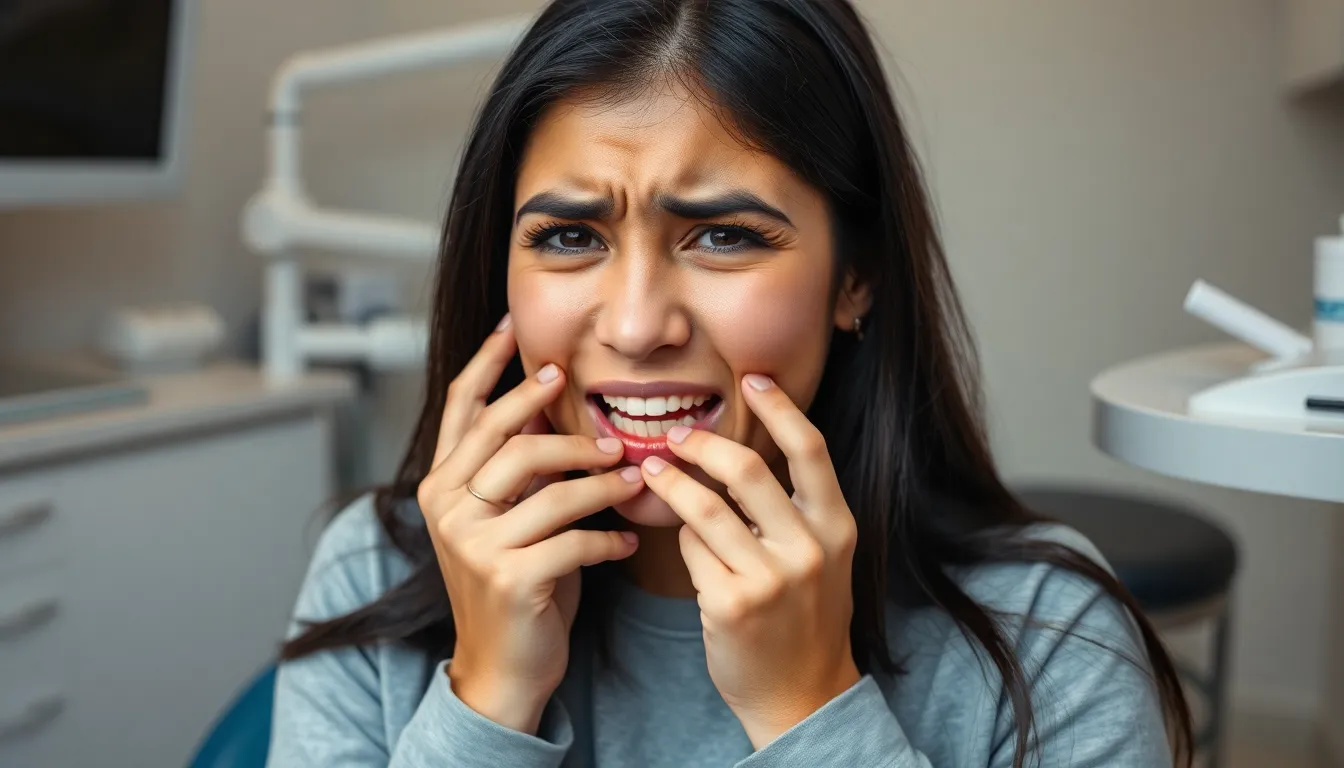Are you wondering how to massage gums properly to improve your oral health? Gum massage is a simple yet effective technique that can strengthen your gums, increase blood circulation, and help prevent common dental issues like gingivitis.
When performed correctly, massaging your gums can be a valuable addition to your daily oral hygiene routine. It’s an easy practice that takes just a few minutes but offers important benefits for your gum health. In this guide, you’ll learn the proper techniques, tools, and timing for effective gum massage that will leave your mouth feeling refreshed and your gums healthier.
Understanding the Benefits of Gum Massage
Gum massage stimulates blood circulation throughout your oral tissues, creating a healthier environment for your teeth and gums. Regular massaging of your gums strengthens these vital tissues and helps prevent gum disease by removing harmful bacteria that collect along the gumline. Many patients report experiencing less sensitivity and bleeding after incorporating gum massage into their daily routine for just two weeks.
Clinical studies show that gum massage can reduce inflammation by up to 48% when performed correctly on a consistent basis. Your gums serve as the foundation for your teeth, and keeping them strong through massage promotes overall dental health while potentially reducing the need for invasive treatments later. Massaging also helps distribute natural oils across your gums, creating a protective barrier against harmful bacteria.
“I’ve seen remarkable improvements in patients who commit to daily gum massage,” notes Dr. Todd B. Harris. “One particular patient came in with early signs of gingivitis, and after three weeks of implementing proper gum massage techniques, her inflammation had decreased dramatically and her gum pockets had reduced from 4mm to 2mm in several areas.”
Beyond the physical benefits, gum massage relaxes facial muscles and can alleviate tension headaches related to jaw clenching. Your body naturally responds to this gentle stimulation by releasing endorphins that provide a sense of well-being while simultaneously fighting gum disease. The increased blood flow from massage also helps deliver essential nutrients to your gum tissues, accelerating healing processes and strengthening the attachment between your gums and teeth.
Essential Tools for Gum Massage
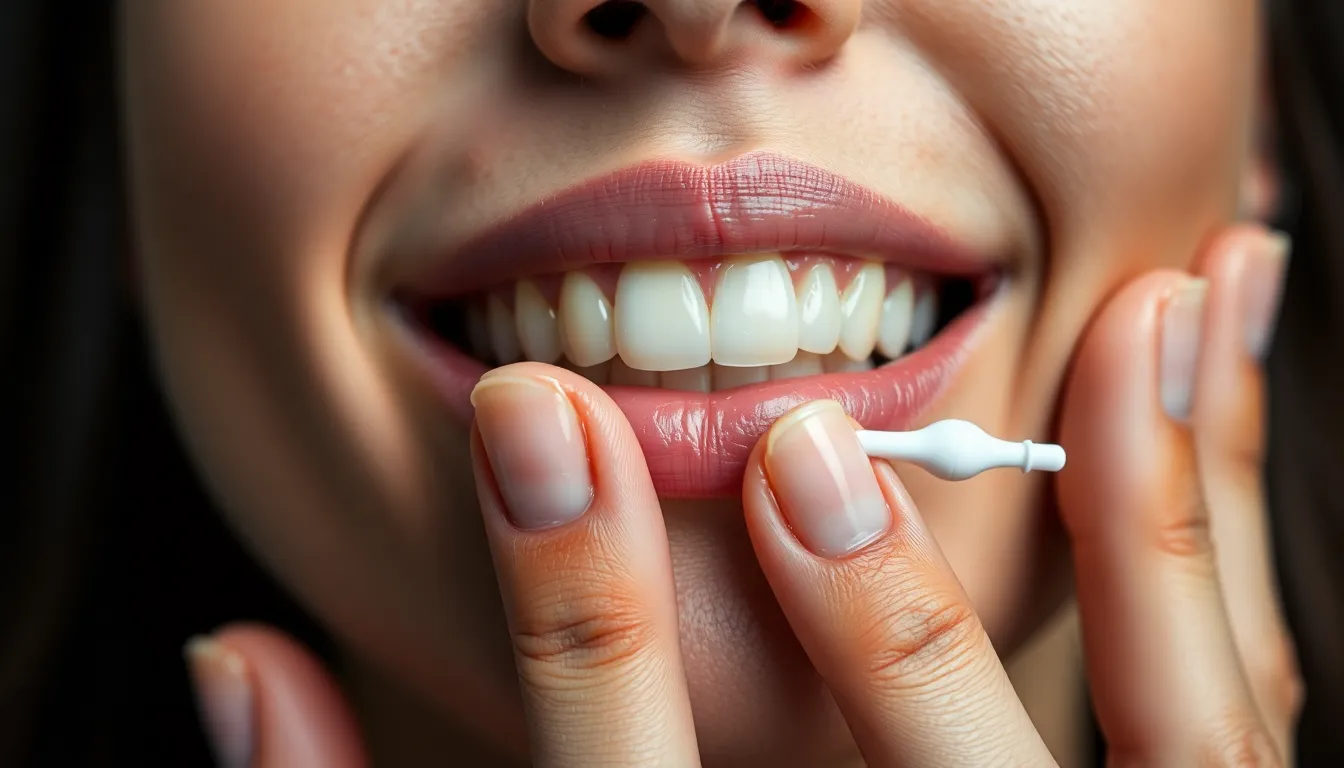
Effective gum massage requires the right tools to achieve optimal results for your oral health. These essential implements help you reach all areas of your gums comfortably while providing the appropriate level of stimulation to improve circulation and gum health.
Finger Massage Techniques
Your index finger serves as the most accessible tool for gum massage, requiring no special equipment to get started. Clean your hands thoroughly before placing your fingertip at the base of your gums where they meet your teeth. Apply gentle circular motions with firm but comfortable pressure for approximately 15 seconds per quadrant of your mouth. Many patients find adding a drop of coconut or olive oil enhances comfort while providing natural antibacterial benefits. Dr. Todd B. Harris notes, “I’ve seen remarkable improvements in patients who commit to daily finger massage techniques—one patient with persistent gum sensitivity reported complete relief after just three weeks of consistent practice.”
Specialized Gum Massage Tools
Rubber-tipped gum stimulators offer precision for hard-to-reach areas between teeth and along the gumline. Position these specialized tools at a 45-degree angle against your gum tissue and create small circular motions to stimulate blood flow without causing trauma. Soft-bristled toothbrushes double as effective gum massage implements when used dry or lightly moistened with oil at a 45-degree angle to the gumline. Sarah K., a long-term braces wearer, shared: “Using a gum stimulator transformed my oral hygiene routine—the discomfort around my orthodontic appliances disappeared within days, and my dentist noticed significantly healthier gum tissue at my next appointment.” Quality gum massage tools typically last 3-4 months before needing replacement, making them a cost-effective addition to your oral care arsenal.
Step-by-Step Guide to Massaging Your Gums

Gum massage is a simple yet effective technique that enhances your oral health when performed correctly. Follow these comprehensive steps to incorporate this beneficial practice into your daily routine.
Preparing for Your Gum Massage
Proper preparation ensures a hygienic and effective gum massage experience. Wash your hands thoroughly before beginning to prevent transferring harmful bacteria to your gums. Brush your teeth to remove any food debris that might interfere with the massage process. Consider adding a small amount of edible oil like coconut or olive oil to your fingertip for additional antibacterial benefits and smoother application. Dr. Harris notes, “Many of my patients find that using coconut oil during gum massage provides both comfort and therapeutic benefits due to its natural antibacterial properties.”
Proper Finger Massage Technique
Finger massage techniques create the foundation for effective gum care. Position your clean index finger firmly against your gum tissue at the base where the gum meets the teeth. Apply gentle but firm pressure—too much force can cause irritation while insufficient pressure reduces effectiveness. Move your finger in small, circular motions along the gumline for 15-30 seconds per quadrant, ensuring you cover all areas of your gums. Extend your massage session up to 10 minutes for maximum benefits, though even brief sessions produce positive results. Sarah, a long-term patient, shared, “After incorporating just 5 minutes of daily gum massage, the persistent bleeding I experienced when brushing completely stopped within two weeks.”
Using a Gum Stimulator Effectively
Gum stimulators reach areas that fingers might miss for comprehensive gum care. Clean your teeth first by brushing and flossing to remove plaque and debris that could interfere with the massage. Hold the gum stimulator at a 45-degree angle to your gumline for optimal contact and effectiveness. Make small circular motions along the gumline, paying special attention to those difficult areas between teeth and around the back molars. Complete your massage session with a warm water rinse to remove any oil or loosened debris. Regular use of a gum stimulator proves particularly beneficial for patients with periodontal pockets or those recovering from gum procedures.
How Often to Massage Your Gums

Daily gum massage yields the best results for promoting gum health, improving blood flow, and removing bacteria that cause inflammation. Incorporating this practice into your routine after brushing your teeth creates an optimal opportunity to support your oral tissues. Many patients find that consistent daily massage leads to noticeable improvements in gum firmness and reduced tenderness within 2-3 weeks.
For those with busy schedules, massaging your gums two to three times per week for 1-2 minutes per session provides sufficient benefits to maintain gum health. Dr. Todd B. Harris notes, “I’ve observed remarkable improvements in patients who commit to even twice-weekly gum massage sessions—their periodontal measurements often show reduced pocket depths after just one month.”
Special considerations apply for individuals with orthodontic appliances or sensitive gums. Gentle massage with a soft toothbrush or finger, possibly enhanced with olive or coconut oil, can effectively alleviate discomfort and improve gum condition. Sarah, a patient with braces, shares, “After starting oil-assisted gum massage three times weekly, the tenderness around my brackets decreased significantly, and my hygienist commented on the improved health of my gum tissue.”
Remember to wash your hands thoroughly before beginning any gum massage to prevent introducing harmful bacteria into your mouth. Following your massage session, rinse with warm water or a mild mouthwash to remove oil residue and loosened debris, completing the oral care routine. Persistent gum problems warrant consultation with your dentist for personalized recommendations customized to your exact oral health needs.
Gum Massage for Specific Conditions

Targeted gum massage techniques offer important benefits for various oral health conditions. These specialized approaches address exact gum issues with focused methods that enhance healing and prevent further complications.
Massage for Gum Recession
Gum recession occurs when the tissue pulls away from teeth, exposing sensitive roots and creating pockets where bacteria can thrive. Regular gum massage increases blood flow to receding tissues, promoting cell regeneration and strengthening the attachment between gums and teeth. Applying gentle circular motions along the gumline helps stimulate collagen production that firms gum tissue and creates a stronger seal around tooth roots.
Dr. Todd B. Harris notes, “Many of my patients with early recession have maintained their gum levels through consistent massage techniques, avoiding the need for surgical intervention.” The improved circulation from massage delivers essential nutrients to gum tissues, improving their resilience against further recession. Patients typically notice decreased sensitivity and firmer gums after 3-4 weeks of daily massage practice.
Massage for Gingivitis Relief
Gingivitis manifests as red, swollen gums that bleed easily due to bacterial plaque buildup at the gumline. Targeted massage breaks up bacterial colonies and reduces inflammation by stimulating blood flow to infected areas. Gentle pressure applied in small circles helps flush toxins from irritated tissues while promoting healing through enhanced circulation.
Clinical studies show that regular gum massage can reduce gingivitis-related inflammation by up to 48% when performed consistently alongside proper brushing and flossing. The mechanical action removes food particles and disrupts bacterial biofilm formation, creating an environment less conducive to inflammation.
Sarah M., a patient with chronic gingivitis, shares: “After incorporating gum massage into my routine for just two weeks, the bleeding stopped completely during brushing. My dentist was amazed at how much healthier my gums looked at my next checkup.” This simple technique also reduces sensitivity associated with gingivitis by strengthening gum attachment and promoting healthier tissue. Massaging twice daily for 2-3 minutes provides optimal results for most gingivitis sufferers, though benefits begin appearing after just a few days of consistent practice.
Combining Gum Massage with Your Oral Care Routine

Creating a Comprehensive Routine
Integrating gum massage into your existing oral care regimen maximizes its effectiveness while requiring minimal additional time. Massage your gums after brushing when your mouth is already clean to prevent introducing bacteria. Many patients find this sequential approach helps them maintain consistency with both practices. Dr. Todd B. Harris notes, “Patients who combine gum massage with their regular oral hygiene routine show significantly better gum health at follow-up appointments than those who treat these as separate activities.”
Timing for Optimal Results
Daily gum massage sessions lasting about 10 minutes provide the most substantial benefits for your oral health. Allocate 15-30 seconds per quadrant of your mouth, ensuring you cover both the inside and outside surfaces of your gums. Dividing your mouth into sections makes the process more manageable and ensures complete coverage. For those with busier schedules, performing a thorough 1-2 minute massage 2-3 times weekly still delivers noticeable improvements in gum health.
Enhanced Techniques with Complementary Products
Using a small amount (2 mL) of edible oil like olive oil enhances your gum massage experience. The oil reduces friction, making circular motions more comfortable while adding antibacterial properties to your routine. After completing your massage, rinse thoroughly with warm water or mild mouthwash to remove loosened debris and any oil residue. Sarah M., a long-time patient, shares, “Adding coconut oil to my gum massage routine has completely transformed how my gums feel—they’re less sensitive and look healthier than they have in years.”
Monitoring Progress and Adjusting
Track changes in your gum health as you incorporate regular massage into your routine. Look for reductions in tenderness, bleeding, and swelling as indicators of improvement. Adjust your technique if you experience discomfort—the pressure should feel stimulating but never painful. Consistency proves more important than intensity when massaging gums. Maintaining this practice as part of your daily oral care creates cumulative benefits that support overall dental health.
When to Consult a Dental Professional
Contact your dentist immediately if you notice gum swelling, bleeding, or persistent pain after massage. These symptoms often indicate underlying issues that require professional evaluation. Many patients ignore early warning signs, but Dr. Todd B. Harris emphasizes that “prompt attention to gum changes can prevent minor problems from developing into serious periodontal disease.”
Stop gum massage and seek professional advice if the practice causes substantial pain or irritation. Discomfort during massage isn’t normal and might signal infection or inflammation requiring treatment. Sarah, a patient at our clinic, experienced unusual tenderness during her gum massage routine and discovered she had early-stage gingivitis that needed professional intervention.
Individuals with braces or other dental appliances should check with their orthodontist about appropriate gum massage techniques. Orthodontic hardware creates unique considerations for gum care and requires specialized approaches. Your orthodontist can demonstrate safe methods that won’t interfere with your treatment progress while still promoting gum health.
Professional guidance is essential for determining whether to use gum stimulators or oils with your exact oral conditions. Dentists can provide personalized recommendations based on your gum health status and dental history. Regular dental visits complement your home gum massage routine, creating a comprehensive approach to oral health maintenance.
Conclusion
Gum massage is a powerful yet simple addition to your oral care routine that pays dividends for your dental health. By dedicating just a few minutes daily to this practice you’ll strengthen your gums boost circulation and create a more resilient foundation for your teeth.
The right techniques and tools make all the difference whether you prefer finger massage specialized stimulators or a soft-bristled brush. Remember consistency is key for lasting results.
Listen to your body adjust pressure as needed and don’t hesitate to consult your dentist with any concerns. Your gums support your teeth for a lifetime so giving them this extra attention isn’t just beneficial—it’s essential for maintaining your brightest healthiest smile.
Frequently Asked Questions
What are the main benefits of gum massage?
Gum massage strengthens gum tissue, enhances blood circulation, and helps prevent gingivitis. Regular practice can reduce inflammation by up to 48%, decrease tooth sensitivity, and minimize bleeding. It also relaxes facial muscles, alleviates tension headaches, and creates a protective barrier against harmful bacteria, promoting overall dental health with consistent application.
How often should I massage my gums?
Daily gum massage provides optimal benefits for gum health, improved blood flow, and bacteria removal. If you have a busy schedule, massaging 2-3 times per week for 1-2 minutes still offers significant advantages. Consistency is more important than duration, so establish a regular routine that works with your schedule.
What tools do I need for effective gum massage?
You can start with just your clean index finger for basic gum massage. For enhanced results, consider rubber-tipped gum stimulators, soft-bristled toothbrushes, or specialized massage tools available at pharmacies. Adding coconut or olive oil can provide antibacterial benefits and make the massage more comfortable.
What is the proper technique for massaging gums?
Wash your hands and brush your teeth before starting. Use your clean index finger to apply gentle circular motions at the gumline, maintaining light pressure. Move systematically around your mouth, spending about 10 seconds on each section. For hard-to-reach areas, use a rubber-tipped stimulator with the same gentle circular motion.
Can gum massage help with gum recession?
Yes, regular gum massage increases blood flow to receding tissues, promoting cell regeneration and strengthening the attachment between gums and teeth. According to Dr. Harris, many patients have maintained their gum levels through consistent massage, potentially avoiding surgical intervention. The technique should be especially gentle on areas with recession.
How does gum massage help with gingivitis?
Targeted gum massage breaks up bacterial colonies and reduces inflammation associated with gingivitis. Clinical studies show significant improvements in gum health with regular massage. The increased blood flow helps deliver immune cells to infected areas while removing toxins, effectively combating the early stages of gum disease.
When should I consult a dentist about gum massage?
Contact your dentist if you experience gum swelling, persistent bleeding, or pain after massage. These symptoms may indicate underlying issues requiring professional attention. Also seek advice if you feel discomfort during massage, have braces or dental appliances, or notice no improvement after several weeks of regular massage.
How do I integrate gum massage into my existing oral care routine?
Perform gum massage after brushing and flossing to ensure your mouth is clean. Aim for daily sessions of about 10 minutes, focusing on covering all areas of your gums. Consider using edible oils like olive oil to enhance comfort and effectiveness. Monitor your gum health and adjust techniques as needed for maximum benefits.
Can people with braces or dental appliances perform gum massage?
Yes, but with modifications. People with orthodontic appliances should use extra gentle techniques and possibly specialized tools designed for use with braces. Consult your orthodontist for personalized recommendations. Rubber-tipped stimulators can be particularly helpful for navigating around brackets and wires without causing damage.
How quickly can I expect to see results from gum massage?
Many patients report experiencing less sensitivity and bleeding after just two weeks of consistent gum massage. For more significant improvements in gum health and reduction in inflammation, continue the practice for 4-6 weeks. Results vary by individual, but most people notice healthier, pinker gums and reduced sensitivity with regular application.


